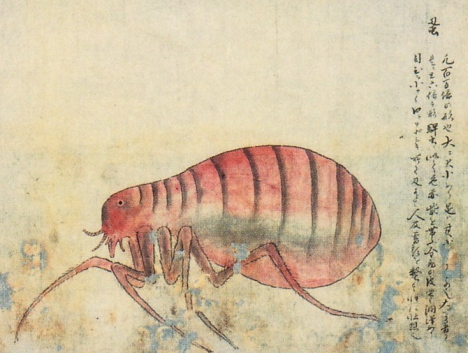While researching tiny art for my previous post, I came across some examples of art that were not small in size themselves. Instead, the artwork portrayed tiny subjects—or subjects that at least appeared tiny.
NPR’s “The Picture Show” featured some extremely beautiful microscopic images assembled by scientists at the University of Wisconsin for an exhibit called “Tiny: Art From Microscopes at UW-Madison.” Who knew fruit fly embryos and mouse lungs could be so gorgeous?
A series of images from the blog Pink Tentacle shows paintings of tiny insects made with the aid of a microscope by the Japanese artist Kenbikyō Mushi No Zu during the mid-nineteenth century. Below is one example of the paintings from the scroll.

from Kenbikyō Mushi No Zu's (”Illustrations of Microscopic Insects”), published in 1860
Tilt-shift photography, on the other hand, portrays full-scale images in a way that makes them appear to be miniature godzilla sets. While digital cameras create this effect via software, film cameras produce it with a special lens. Unlike a standard lens which have a fixed focal plane, a tilt-shift lens has a focal plane that can shift and concentrate the focus onto one point. The image below is a full-scale image of an airport.

Vincent Laforet for Smashing magazine
The tilt-shift effect on video is even more disorienting. The people in them look like tiny claymation sculptures moved in increments from frame to frame. They’re not! Keith Loutit’s video, Beached, is an awesome example that’s really worth watching. Enjoy!




Comments (0)